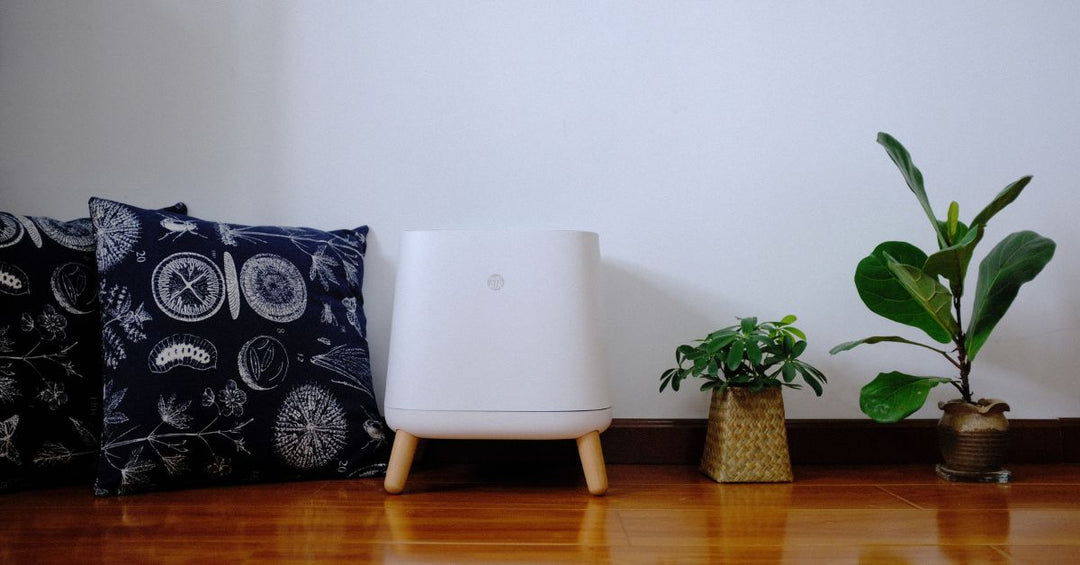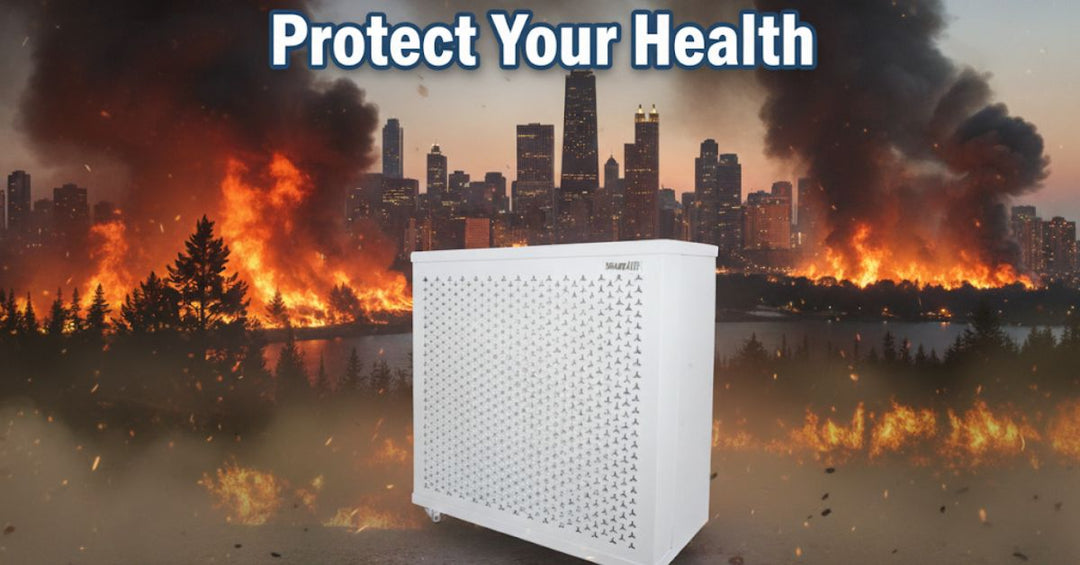How to Choose the Right Air Purifier for You
Air purifiers do not need to be more complicated than a high-quality fan and a filter. The fan pushes the air through a High Efficiency Particulate Air (HEPA) filter that captures any harmful particles leaving clean, purified air. An activated carbon filter can also be added to remove harmful gases and odors.
HEPA filters were invented in the early 1940’s for the Manhattan Project to stop the spread of airborne radioactive contaminants. They were further developed and used for decades by NASA and then widely by hospitals and other critical use facilities.
H13 HEPA filters, which are often marketed as “Medical Grade” or “True HEPA” filters, capture 99.97% of the most penetrating or difficult to capture 0.3-micron particles such as fine dust and smoke; however, HEPA filters are even more efficient at capturing both larger particles such as pollen and mold as well as much smaller particles including viruses such as COVID-19.
HEPA filters are tested at .3-microns because it is the most difficult size to capture. While it is intuitive that larger particles are almost 100% intercepted or screened by the HEPA filter. Many people incorrectly assume that nanoparticles (0.1 – 0.001 microns) are too small and can fit through the fibers of the HEPA filter. While technically true, a study by NASA shows that nearly 100% are in fact captured by the HEPA filter due to an effect called Brownian Motion. This means that tiny particles bounce around in random directions instead of moving in a straight line.

Due to Brownian Motion, nanoparticles get caught in the fibers of the HEPA filter in a process called diffusion. This makes HEPA filters extremely effective at filtering out viruses from the air that we share with our co-workers, classmates, friends and family.

So why is there so much focus on the 0.3-micron sized particles? It turns out that these are the hardest size particles to capture. They are too big for Brownian Motion and so they move in a straight line but are still small enough that they become difficult to capture in the fibers.
The blue line on the following graph shows a combined capture rate of 99.97% for .3-micron while the capture rate for both virus size particles (.1-micron) and larger 1.0-micron allergens are screened out well above 99.99%.

While HEPA filters can filter down to nanoparticles, they are not able to filter out harmful gases. This is the role of an Activated Carbon filter. Activated carbon is processed to have a massive surface area that absorbs harmful gases like NOx, ozone, radon, and volatile organic compounds (VOC’s) such as formaldehyde and benzene. Common indoor sources of VOCs include paints, cleaning supplies, and cigarettes.

What about UV lights and Ionizers for air purification? Do we need these?
Let’s first look at UV (ultraviolet) lights for purification. Although UV lights have been used for over 50 years to kill germs and viruses, it takes several minutes of sustained exposure to kill the viruses and germs. There is simply not enough time for UV lights to work effectively in an air purifier where the air is traveling quickly. This is why air purifiers with UV lights must also include HEPA filters to be effective. Air purifiers with UV lights are generally more expensive and difficult to maintain, and exposure to UV light can damage and weaken the effectiveness of the HEPA filter. Since the HEPA filter is doing all the work, Smarter HEPA believes that having the simple HEPA filter without the expense of the ineffective UV light is the best approach.
Ionizers send out negative ions to attach to air particles, causing them to stick to surfaces such as walls and floors through static electric interactions. While sequestering harmful particles to interior surfaces may prevent breathing them in, capturing the contaminants in a single place (the HEPA filter) allows for easy disposal so that the harmful particles can be removed from the room altogether. The negative ions can also react with air particles to produce harmful particulates, VOC gases, and ozone.
At Smarter HEPA we believe the most effective, least harmful, and most cost-efficient way to clean air is the simplest way – with HEPA filters and Carbon filters. Our line of Smart Health air purifiers are no-nonsense, straightforward air purifiers that just work.
The Smart Health air purifiers were designed by an aeronautical engineer to be low-noise, energy efficient, and cost-effective while delivering superior filtration with high quality HEPA filters and optional activated carbon filters.
Smart Health offers the Carbon filter as an added option for the Blast and Blast Mini, but the Smart Health S comes standard with a Carbon filter.
Other important aspects to consider when buying an air purifier are:
- How loud is it? Can it be operated comfortably on high or does the fan speed need to be turned down thus reducing the effective capacity.
- How many clean Air Changes per Hour (ACH) will you get for a given room at its effective air flow rate?
- What is the annual cost for replacement filters and electrical usage?
Often noise levels above about 55 dB are considered too high for classrooms and offices. Some air purifiers have a high or turbo setting that could be over 60 dB. In sizing an air purifier for a given room, one should use the air flow in Cubic Feet per Minute (CFM) for the fan level that corresponds to an acceptable dB level. It is important to note that every 10-decibel increase is perceived as doubling in loudness, so 60 dB is perceived to be twice as loud as 50 dB.
Air Changes per Hour (ACH) tells you how often the air in the room will be cleaned in an hour. For some areas where there are not a lot of people, 2 ACH is acceptable, but for busier areas you may want more. ASHRAE suggests 4-6 ACH for classrooms. The higher the ACH the more times per hour the air is cleaned.
The number of ACH is calculated by taking an air purifier’s filtering capacity in CFM times 60 minutes/hour and dividing that number by the volume of the room. Volume is the area of the room in square feet times the height (generally calculated at eight feet).
CFM x 60 / Length x Width x Height (8ft)
Many air purifier companies have expensive replacement filters with shorter lifespans. The annual filter replacement cost can be significant and should be considered in a purchase decision. While less of a cost impact, energy efficiency is important and should also be considered. The Smart Health line of air purifiers excel in both low annual filter cost and energy usage.
Finally, when comparing different air purifiers, both the purchase and maintenance costs must be compared on an equal capacity basis. For example, comparing the price for air purifiers with 200 CFM capacity to one with 300 CFM would not be fair unless the costs were adjusted for the capacity difference.
At Smarter HEPA, our passion is cleaning air with simple, stylish, efficient, and cost-effective air purifiers. Our products are designed to be powerful, quiet and do one thing exceptionally well, clean air at an honest price.




